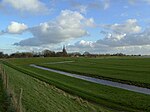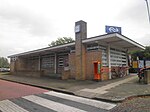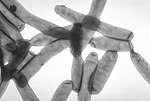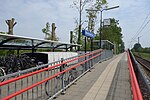Grootebroek
Former municipalities of North HollandNorth Holland geography stubsPopulated places in North HollandStede Broec
Grootebroek is a town in the Dutch province of North Holland. It is located in the municipality of Stede Broec. Grootebroek was a separate municipality until 1979. The town is called Grootebroek after a large swamp in the area; in Dutch, "groote" means "large" and "broek" means "swamp". The most common meaning of "broek" in present-day Dutch is "pants", leading to some hilarity about the town's name. Grootebroek is located next to Lutjebroek, "small swamp". The Dutch football players Frank and Ronald de Boer grew up in Grootebroek.
Excerpt from the Wikipedia article Grootebroek (License: CC BY-SA 3.0, Authors).Grootebroek
Annie M.G. Schmidtweg, Stede Broec
Geographical coordinates (GPS) Address Nearby Places Show on map
Geographical coordinates (GPS)
| Latitude | Longitude |
|---|---|
| N 52.7 ° | E 5.2166666666667 ° |
Address
Annie M.G. Schmidtweg 16
1613 MA Stede Broec
North Holland, Netherlands
Open on Google Maps








